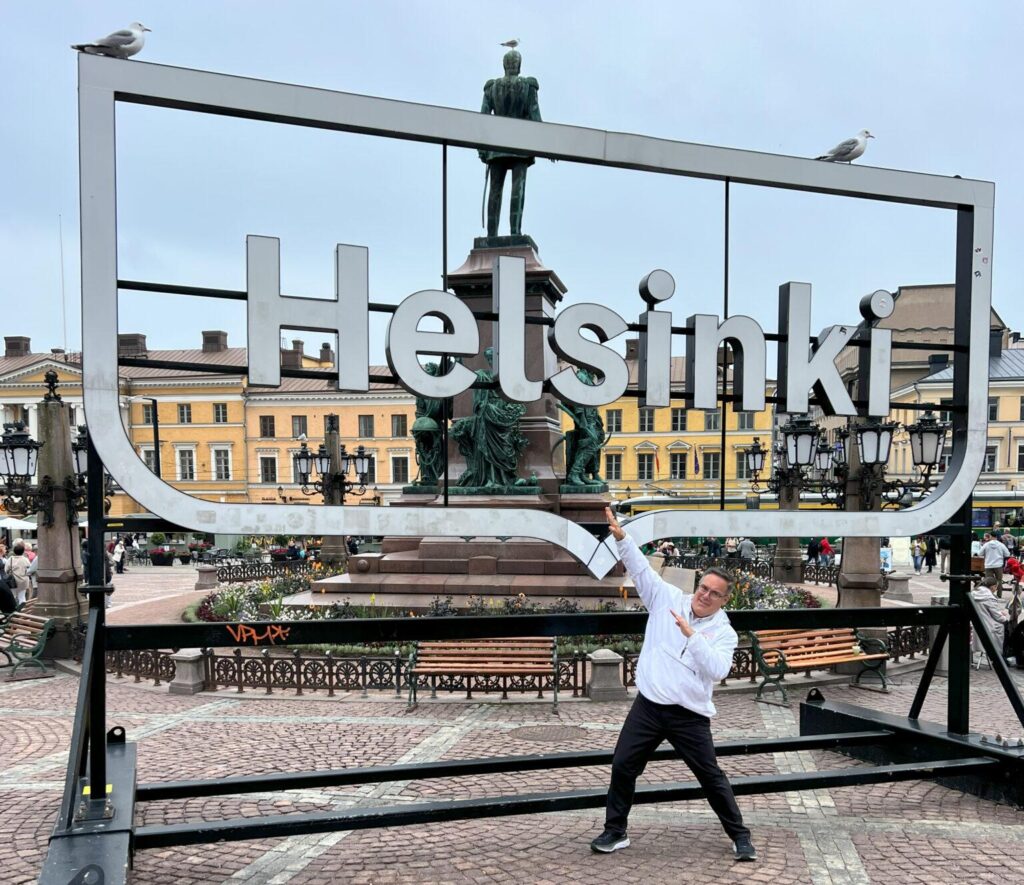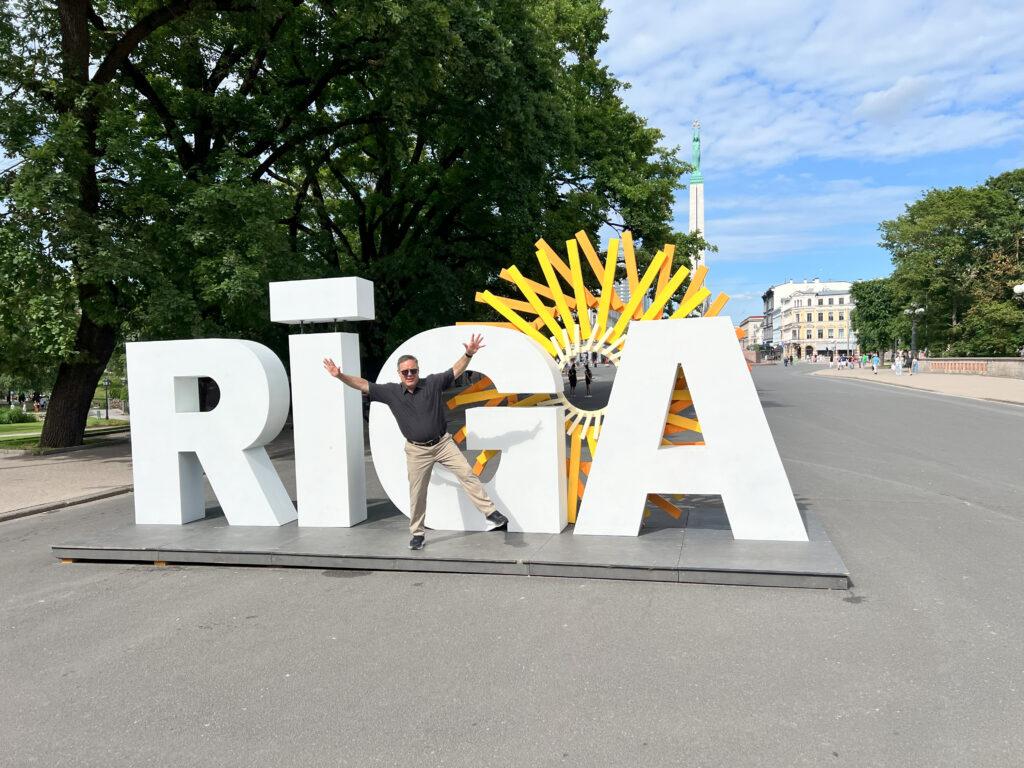
In the world of architecture and interior design, travel offers invaluable insights, influencing how we approach materials, space, color, how we translate culture into the built environment, it even informs our own place in the world. In addition to the adventures by our numerous GOH Travel Scholarship winners, other HBG Design team members regularly embark on distinct journeys of their own. Traveling through regions such as Eastern Europe, Western Europe and South America, they encounter rich tapestries of contrasts and vibrant influences that provide fresh perspectives on life, inspiration, and creativity. HBG’s global design perspectives directly inform and help shape our project designs.

This holiday season, as HBG Design waits patiently for the announcement of our 2025 GOH Travel Scholarship recipient, we invite you to follow along as we share personal and professional insights from HBG Principal Architectural Designer, Rob Jurbergs, AIA; HBG Lead Architectural Designer, Nathan Blair, AIA; and Lead Interior Designer, Christine Wass, IIDA, NCIDQ, through their own international explorations!
HBG’s Global Design Perspectives:
Principal Architectural Designer, Rob Jurbergs, Journeys Through Finland, Estonia, and Latvia
This past summer, I embarked on an incredible journey to Finland, Estonia, and Latvia. My last name, Jurbergs, originates in Latvia, a Baltic state tucked between the west side of Russia and Poland, and just south of Sweden. After World War II, a significant Latvian community settled in Senatobia, Mississippi, including my grandparents, aunt, and uncle. Growing up, I heard countless stories of Latvia’s rich traditions, especially the Midsummer celebration, the biggest holiday of the year. Latvians celebrate both the nights of Midsummer, Līgo, and the next day, which is known as St. John’s Day or Jāņi (Jani). This is a time when people gather, light bonfires, and celebrate the longest day of the year—much like how Americans celebrate the Fourth of July. This tradition has been on my bucket list for as long as I can remember, and this trip became my opportunity to experience it firsthand.

Flying into Helsinki, Finland, a friend and I stayed in the heart of downtown. I found myself surrounded by this modern city and striking architecture, with the only goal being to immerse myself in my surroundings of this centuries-old waterfront commerce hub that continues to thrive today. Helsinki’s architecture reflects its history, and intriguing Orthodox church architecture, with designs that hint at Russian influence.
Helsinki is now known as a design capital, and the city’s blend of modern innovation with rich arts immediately resonated with me. I visited the Kamppi Chapel, an iconic wooden structure resembling a large boat, and was captivated by its simplicity and peacefulness. Kamppi Chapel has been featured in numerous design publications; and it’s a powerful reminder of how architecture can create serene, introspective spaces in the middle of bustling cities.

I was excited to visit the Oodi Public Library, a significant piece of architecture that appears to float like a sail. The wood exterior rises vertically like an inverted ribbon and curves seamlessly into a canopy, with light flooding in to create a feeling like you’re at the prow of a ship. The building even ramps up at the end offering overlook areas—just a pure, immersive experience. This incredible space was filled with angular structure and expansiveness, with steps leading up to sit and take in the amazing light quality. The glass also had a special print that helps reduce heat and glare. It’s amazing how thoughtful design can elevate a public space such as a library, making it functional, communal, and inspiring.

A highlight of my Finnish travels was visiting the Loyly sauna, an experience I’ll never forget the rest of my life. This waterfront spa merges the region’s traditional sauna culture with incredibly unique design. Built with a double skinned system of exterior wood slats and slides and sheer glass behind, the building allows glimpses of the sea from within while appearing impenetrable from the outside, like a rock from the harbor. This emphasized to me how nature and architecture can combine to create spaces that benefit our well-being—a concept I hope to incorporate in my future projects.
In the co-ed sauna, I experienced Finland’s communal culture, where people gather weekly to unwind and refresh. Jumping from a sweltering sauna into the Baltic Sea was a sensory shock unlike any other! You feel completely relaxed, almost like a drunkenness hits your system. The heat of the sauna was so intense that even holding my glasses hurt—the metal was scalding. Then, plunging into the freezing water, your body reacts instantly, releasing a rush of endorphins. It’s an incredible sensation to go back and forth between the two extremes.
Crossing into Estonia by ferry, I found myself in the UNESCO World Heritage site of Tallinn, a perfectly preserved medieval city. Walking through Tallinn was like stepping into Disneyland in a way, but with authentic buildings, meandering cobbled streets and fortress walls dating from the 1400s. Every corner seemed to tell a story. Tallinn’s rich history and historical structures made me think about how the medieval city’s scale and layout create an almost theatrical experience for visitors. There was still evidence of the more recent influence from communism, but the town is working to embrace its medieval story and working to restore the town. Tallinn is an example of design that fosters a living, breathing connection to the past.
Finally, I arrived in Latvia via bus on roads that cut through pastoral fields and wooded sections. Latvia’s landscape was every bit as breathtaking as my grandmother’s stories described, with beautiful forests, bucolic landscaped rivers very close to the ocean, and just an awesome natural environment. This is when I finally felt that I was truly experiencing my heritage. Riga, the capital, felt like a blend of the old and new, with medieval buildings alongside contemporary structures. My Airbnb in Riga was a cozy loft with timber rafters, perfect for taking in the city’s charm and history.
 Right outside stood a monument that is essentially Latvia’s equivalent of the Statue of Liberty. This is their monument symbolizing independence. Remarkably, they built it in the early 1920s as an independent nation before World War II. My family immigrated after the war as war refugees. Latvia, however, remained under Soviet control until 1990, when they regained independence.
Right outside stood a monument that is essentially Latvia’s equivalent of the Statue of Liberty. This is their monument symbolizing independence. Remarkably, they built it in the early 1920s as an independent nation before World War II. My family immigrated after the war as war refugees. Latvia, however, remained under Soviet control until 1990, when they regained independence.
Many Latvians who left initially thought they’d return after a short time. But once Latvia fell under communist control, few returned, not wanting to live under such restrictions. My grandparents, along with others, built their lives here in America. Communication with family in Latvia was limited, especially between generations. My aunt and uncle, now in their 70s, learned to speak Latvian as children, but connections to family there gradually faded.
Communism left a dark mark on Latvia’s history. Our tour guide told us about the deep distrust Latvians felt during the Soviet era—even with neighbors, as the KGB could detain people at any moment. Some of my distant relatives were even sent to Siberian work camps, essentially a death sentence, for opposing the Soviet regime.

Exploring Riga, we saw layers of this history. Coming from Helsinki, a modern city with a carefully preserved history, Riga felt like a blend of both worlds. The old squares, churches, and architecture brought centuries of history to life, going back to the 1300s and 1400s, well before America was founded. There is also a blend of newer architecture inserted through the town. Also, not many people know that the first Christmas tree was decorated in Riga.

The highlight and main reason for my trip was to experience Midsummer. I joined locals in their traditional festivities. Latvia has very old cultural roots, with traditions that celebrate nature, centered around the sun as a source of energy and life, especially for crops. Given its northern latitude—similar to Fairbanks, Alaska—Latvia experiences long, dark winters. So, the summer solstice, the longest day of sunlight each year, is a time of major celebration. People come together for dancing, singing, and wearing traditional dress. Men wear oak wreaths and women wear flower wreaths on their heads. I donned an oak leaf headpiece, sang traditional folk songs and danced around the bonfires. This experience was surreal—here I was, celebrating the Midsummer solstice as my ancestors had, feeling a profound connection to my roots. At the end of the night, we threw our oak leaf wreaths into the bonfire as is customary.
The tradition is to light the bonfire and stay up all night to make the most of this special day. Did I stay up all night? Almost! We stayed out late, but I had a flight early the next day, so I didn’t sleep much, just to make sure I didn’t miss my flight!
Also, I lost weight leading up to this trip, and a big part of it was shifting my mindset. I started to see this journey as an opportunity to improve my health and fitness on multiple levels. It made me realize that I need to focus on my own well-being and take better care of myself. I gained a new perspective—walking everywhere is just a natural part of daily life in Europe, and it made me appreciate the benefits of staying active.
This Baltic adventure wasn’t just a journey through historic architecture or beautiful landscapes; it was a lesson in how heritage, meaningful places, and traditions shape humanity, well-being, and create connections. It was my glimpse into a deeply communal culture that prioritizes shared experiences, staying active, and finding joy, qualities I think are overlooked in today’s fast-paced world.

At HBG Design, we see travel as a powerful source of inspiration, broadening our perspectives and enriching our work. This month, we honor the impact of global exploration on our designs—a legacy rooted by our co-founder, Gregory O. Hnedak, FAIA, whose passion for experiential learning lives on in HBG’s GOH Travel Scholarship. Greg believed that immersing oneself in diverse cultures opens doors to deeper, more meaningful design. His challenge to us remains:


